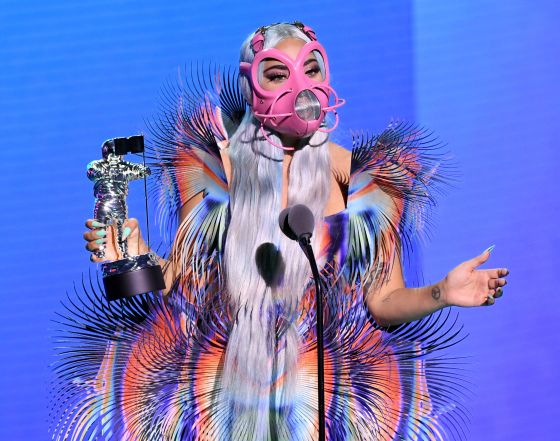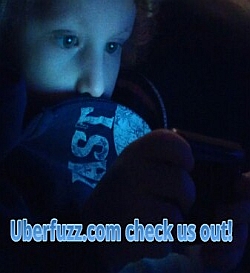It was just a year ago that the Jonas Brothers sauntered down Asbury Park to a roaring, penned-in crowd for the MTV Video Music Awards. Such a scene would be unthinkable in today’s socially distanced climate—and on Sunday, MTV took on the tall task of producing one of first major U.S. live awards shows of the COVID-19 era.
In front of a crowd of no one in New York City, Keke Palmer hosted the proceedings; Lady Gaga, Ariana Grande, BTS, the Weeknd, DaBaby, Miley Cyrus and others performed in sequences that were shot across the city or in front of greenscreens. The socially distanced setup actually improved the show in some respects: there were no agonizingly slow walks to the stage or stifling bleeps of live audio, and the runtime was a relatively brisk two and a quarter hours.
But the show also missed the scale and spontaneity that has previously made the VMAs so unpredictable and compelling. Here are the show’s most memorable moments, for better or worse.
Best Overall: Lady Gaga
Keke Palmer may have been the hosted the show, but Lady Gaga was the big star. She waltzed to the stage repeatedly to collect four on-camera awards—including Artist of the Year—and was given free rein to play a winding medley from her new album, Chromatica. In these bite-sized chunks of time onstage, she showed flashes of why she’s been one of the most reliable pop stars over the last decade, with brawny vocal runs, idiosyncratic dance routines, splashes of bluesy piano and compassionate acceptance speeches.
But her masks were perhaps the most memorable aspect of her night. It’s not surprising that Gaga, who has been visually radical since she arrived in the pop world a decade ago, would make the best out of a dicey situation, even one that requires covering her famous nose. But she raised the bar for PPE fashion going forward, coming out first with an inset-like gas-mask getup; then a tentacles to become a cousin of Pirates of the Caribbean’s Davy Jones; then a reflective silver one recalling Watchmen’s Looking Glass, and finally an imposing head-to-toe ensemble a la Maleficent.

Introducing the #VMAs first-ever TRICON Award recipient: @ladygaga! 💫 pic.twitter.com/JUlDOBhdAV
— MTV (@MTV) August 31, 2020
“Wear a mask. It’s a sign of respect.” –@ladygaga, 2020 #VMAs pic.twitter.com/tmWnf05Pz8
— MTV (@MTV) August 31, 2020
Best: Dystopian Sets
Nothing about 2020 is normal, and thankfully, the VMAs and its artists didn’t try to carry on as usual, but instead embraced dystopian aesthetics throughout, leaning into what Lady Gaga termed onstage as “the wrath of pop culture” and “the rage of art.” Palmer stood on a huge digital stage surrounded by more screens on which tiny audience members flicked in and out; in the virtual rafters, shadowy Sims-like avatars roared their approval.
The Weeknd showed up disoriented, bandaged and bloodied (as he has during press appearances for most of this year). DaBaby performed on top of a cop car and in front of a greenscreen of a smoldering cityscape. Doja Cat pranced through a reddish desolate landscape that resembled either Mars or the bottom of the sea. And constant references to death—from Chadwick Boseman to Jacob Blake to those killed by the coronavirus—lent a somberness to the show that reflected the year at large.
Worst: Lack of Hip-Hop
On the other hand, the VMAs seemed to exist in an alternate reality in which hip-hop isn’t the driving force of the modern music industry. Only one true rap song won an on-camera prize, and it was in the hip-hop category, which was presented, for some dumbfounding reason, by Blink-182 drummer Travis Barker. The VMAs are supposed to be the more forward-thinking younger brother of the Grammys, but many of the year’s biggest stars—including Lil Uzi Vert, Lil Baby, YoungBoy Never Broke Again and Roddy Ricch—were nowhere to be found.
Congrats to @theestallion on winning Best Hip Hop 🔥#GirlPower @seeher2020 #seeherHearher #VMAs pic.twitter.com/xMFmOZOVqT
— MTV (@MTV) August 31, 2020
Instead, the telecast was dominated by songs indebted to 80s pop, from the Weeknd’s go-go synth pop anthem “Blinding Lights” to Miley Cyrus’s Stevie Nicks-inspired “Midnight Sky.” The VMAs landed big stars, but mostly failed to capture what the dominant stream of music actually sounds like today. J-Hope of BTS put it best, during the K-pop group’s breezy performance of “Dynamite”: “Disco overload / I’m good with that, I’m good to go.”
Best: Boy Bands
Still, it was hard not to be charmed by the two boy bands that performed on Sunday: BTS, from South Korea, and CNCO, from Latin America. The former performed “Dynamite,” their first fully English language song, with crisp choreography and snazzy color-coordinated suits. The latter embraced the strange setup of the drive-in concert at Skyline Drive-In in Greenpoint by wandering into the metallic audience and jumping on top of cars. The performance looked retro and futuristic at the same time.

Best: Chloe x Halle
One of the night’s most electric performances was relegated to the pre-show. The R&B duo Chloe x Halle have broken out this year thanks to both their immaculate album Ungodly Hour and their poised, shrewdly-shot home performances. Their pre-taped VMAs performance was no exception: they sang and danced to a reworked version of the album’s jazzy title-track inside of a conical strobe. With any luck, they’ll be on the mainstage next year.
Worst: Keke Palmer’s Impressions
Overall, Palmer made the out of a tough gig, bringing her trademark exuberance and mischievousness to inject energy straight to the camera from various spots around the city. But Palmer thrives most in informal settings and when bouncing off other personalities—as evidenced by her many viral interviews or the “sorry to this man” meme—and in comparison, her crowdless exhortations lacked verve. A running bit in which she tried on some impressions—including a skeevy male street performer, a ditz and an haute socialite—likewise fell flat. On the other hand, she was a whole lot better than last year’s host, Sebastian Maniscalco.
Lady Gaga took centerstage in the first major U.S. live awards show to air in the age of COVID-19.
